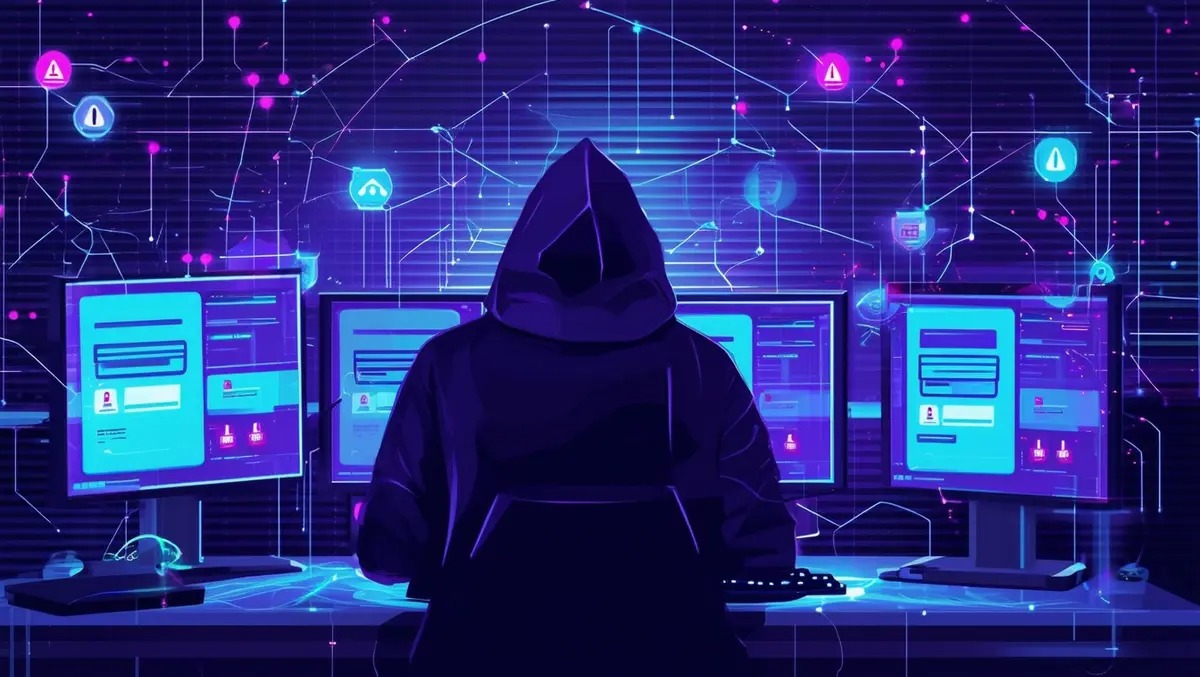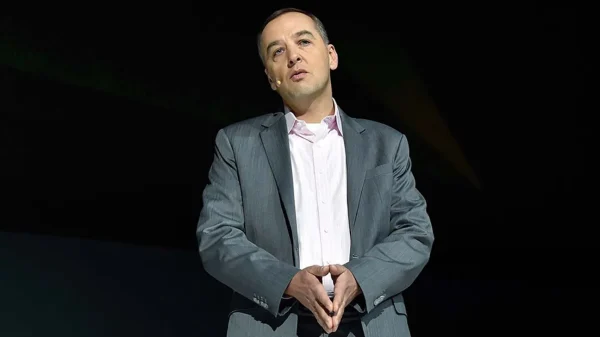Cybersecurity continues to demand urgent attention as we enter 2025. Every year, cybercriminals develop new strategies and techniques aimed at exploiting weaknesses in digital infrastructures. This year promises to bring a series of fresh dangers that must be carefully monitored by individuals, organisations, and governments alike.
The rapid growth of digital connectivity, paired with the widespread adoption of smart devices and cloud services, has opened numerous avenues for cyber attackers. Awareness of these dangers is essential to protect private information, ensure business continuity, and maintain trust in digital systems.

Protecting digital systems is more critical than ever this year (Photo: Alamy)
Cybersecurity professionals have identified a number of threats that are expected to shape the threat environment this year. Attackers have expanded their targets well beyond traditional companies, now focusing on critical sectors such as healthcare, education, manufacturing, and even personal devices.
Understanding the techniques behind these attacks is crucial for building defences that can withstand such intrusions and avoid costly damage.
1. Phishing Attacks Gain New Levels of Sophistication
Phishing remains one of the most popular methods used by cybercriminals to deceive victims into revealing sensitive information. In 2025, these attacks will reach new heights of sophistication as artificial intelligence and social engineering become central to the strategy.
Emails and messages will be tailored to appear increasingly legitimate, imitating trusted sources such as colleagues, banks, or government bodies with alarming accuracy. This will result in higher rates of credential theft, fraudulent transactions, and successful infiltration of secure systems.
Beyond traditional email phishing, voice phishing, or “vishing,” is expected to rise considerably. Fraudsters will use phone calls or voice messages to manipulate targets into disclosing personal details or downloading malicious software.
Organisations should invest in regular awareness training and enforce strict verification protocols to combat these deceptive approaches. Failure to adapt could leave many vulnerable to manipulation and data loss.
2. Ransomware Develops Into a Dual Threat
The ransomware menace will grow in scale and complexity throughout the year. Rather than only encrypting data and demanding payment, attackers will increasingly combine this with data theft.
They will threaten to release stolen information publicly unless ransom demands are met, making these attacks more damaging and stressful for victims. This “double extortion” tactic places additional pressure on organisations to prevent breaches and maintain secure backups.
Moreover, ransomware operators will broaden their focus to include sectors that previously experienced fewer attacks. Educational institutions, supply chains, and smaller enterprises will be targeted aggressively.
These organisations may lack the sophisticated defences of larger corporations, which makes them attractive targets. It becomes essential to implement layered security measures, ensure reliable data backups, and prepare incident response plans to limit the fallout from such attacks.
3. Artificial Intelligence Becomes a Tool for Attackers
Artificial intelligence is poised to become a powerful instrument in the hands of cybercriminals. While AI has been a valuable aid for detecting threats and automating responses, criminals are now exploiting it to craft more effective attacks.
In 2025, attackers will use AI-driven malware capable of adapting to and evading security controls. These programs will be able to morph and respond dynamically, making them harder to detect or contain.
Deepfake technology, an extension of AI, will become more convincing and widely used in fraud schemes. Impersonating high-ranking executives or government officials through synthetic audio and video will create opportunities for deception at the highest levels.
Such attacks have the potential to disrupt business negotiations, spread misinformation, or seriously damage reputations. Organisations must adopt AI-based detection tools and keep their intelligence on threat tactics up to date in order to counter these risks.
4. Internet of Things Devices Open Up New Attack Surfaces
The number of internet-connected devices continues to rise rapidly. These devices, collectively known as the Internet of Things (IoT), range from smart home assistants to medical devices and industrial sensors.
In 2025, attackers will increasingly exploit the weak security often found in these gadgets. IoT devices typically have limited processing power and outdated software, leaving them vulnerable entry points for cyber intruders.
A compromised IoT device can be used to launch large-scale distributed denial-of-service attacks or act as a stepping stone to infiltrate more critical systems. As these devices become integral to homes and businesses, securing them through proper configuration, timely updates, and strong authentication will be crucial in reducing risks associated with this growing technology.
5. Threats Targeting Supply Chains Intensify
Cybercriminals will continue to focus on attacking supply chains as a way to bypass direct defences on their primary targets. These attacks exploit the security weaknesses of third-party vendors, software suppliers, and contractors to gain access to larger, more secure networks. Such incidents often remain unnoticed for extended periods, causing severe damage before detection.
Companies must enhance their approach to vetting and monitoring suppliers, enforcing stringent cybersecurity requirements and transparency. Failure to address supply chain security will expose organisations to indirect but potentially devastating cyber risks. In addition, collaborative efforts between companies and industry bodies can help create standards that reduce supply chain vulnerabilities.
6. Cloud Computing Brings Its Own Challenges
Cloud services have become central to modern business operations, providing flexibility and scalability. However, this dependence comes with a range of security challenges.
In 2025, attacks on cloud environments will increase, particularly targeting misconfigurations and compromised credentials. Cybercriminals seek to steal data or disrupt cloud-hosted applications, affecting organisations large and small.
Ensuring the security of cloud platforms demands strict identity and access controls, ongoing monitoring, and adherence to best practices in governance. Organisations must be vigilant in managing user privileges and promptly fixing security gaps in their cloud infrastructure. A failure to maintain cloud security can lead to data breaches, service outages, and damage to brand reputation.
7. Mobile Devices Continue to Attract Malicious Actors
With the widespread use of smartphones and tablets, the mobile ecosystem remains a major target for cyber threats. Malicious software designed to infect mobile devices will become more advanced, designed to avoid detection while stealing data or spying on users. Mobile payment apps and communication tools will be under intense scrutiny, as they hold financial and personal information that hackers crave.
To protect themselves, users must keep their devices updated with the latest security patches and only download apps from trusted sources. Businesses should enforce comprehensive mobile security policies, combining encryption, remote management, and threat detection to safeguard sensitive data and maintain customer confidence.
8. Critical Infrastructure Under Increased Pressure
Critical infrastructure such as energy grids, water supplies, transportation networks, and communication systems are vital to daily life and economic stability.

Cybercriminals are targeting everything from personal devices to critical infrastructure (Photo: Shutterstock)
These sectors will face growing cyber threats in 2025, including ransomware and sabotage attempts aimed at causing disruption or extracting ransom. Cyber attackers motivated by political, ideological, or financial reasons view critical infrastructure as high-value targets.
Protecting these essential services requires substantial investment in advanced monitoring, incident response, and cooperation between public and private entities.
Implementing comprehensive cybersecurity frameworks and promoting information sharing will be necessary to prevent attacks that could impact public safety and national security.
What Can Be Done to Strengthen Defences?
Confronting the variety of cyber threats that arise each year demands a proactive approach. Organisations should adopt a security-first mindset that integrates risk assessment, continuous monitoring, and staff training.
Employing up-to-date technologies such as behavioural analytics, threat intelligence platforms, and AI-powered defence systems will improve the ability to detect and respond swiftly to incidents.
However, creating a culture of cybersecurity awareness among employees is crucial since human error often enables attacks. Establishing clear protocols, regular drills, and accessible reporting mechanisms can reduce vulnerabilities caused by phishing and social engineering.
Governments also play a critical role by developing regulations and frameworks that promote security best practices and encourage collaboration between the private sector and law enforcement. International cooperation will be essential to track down cybercriminals and disrupt their operations across borders.
Individuals should take basic but effective precautions, including using strong and unique passwords, enabling multi-factor authentication, and regularly updating software. Being alert to suspicious communications and knowing how to respond can help reduce the likelihood of falling victim to cybercrime.
The continuing evolution of technology means that cyber threats will keep adapting and becoming more complex. Vigilance and preparation at every level from individual users to multinational corporations, are necessary to minimise the damage caused by these attacks.
Taking cybersecurity seriously in 2025 will help protect sensitive information, safeguard infrastructure, and maintain trust in the digital world that underpins so much of modern life.
























